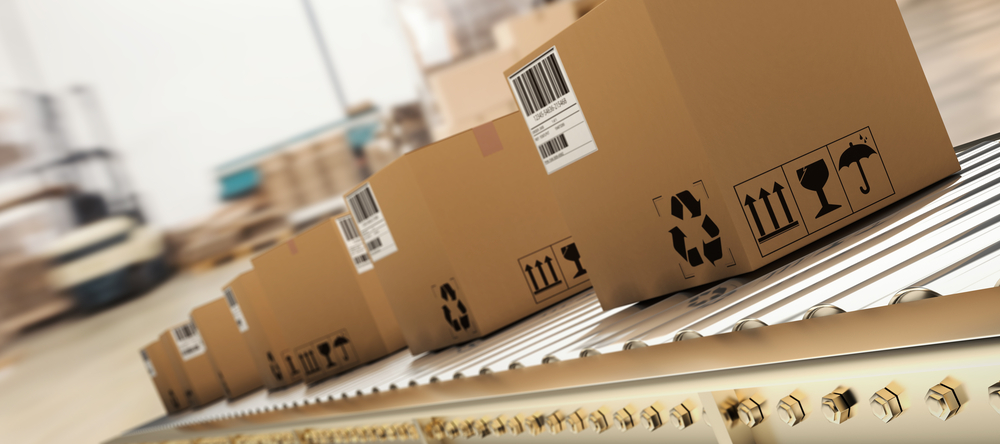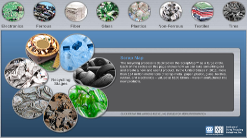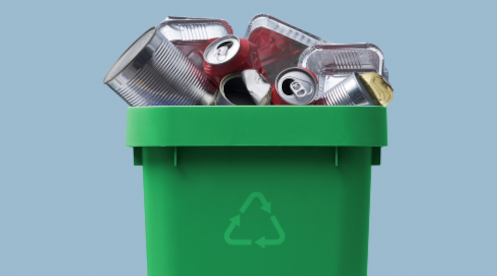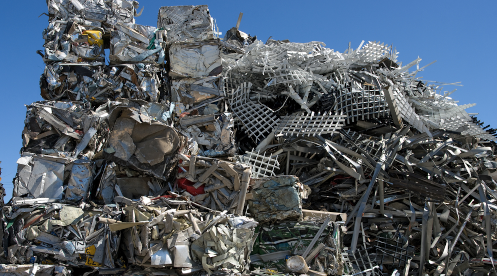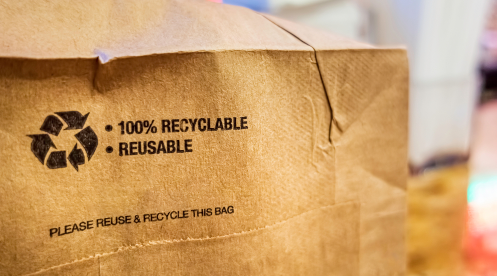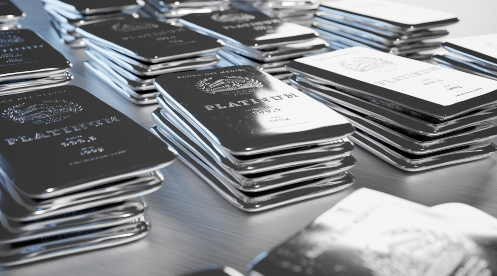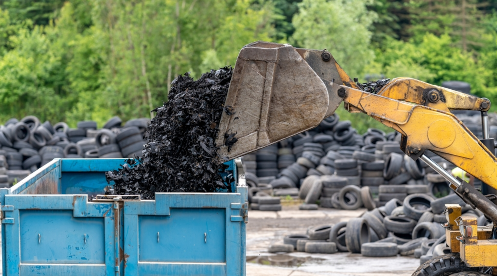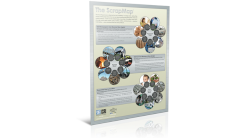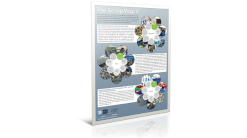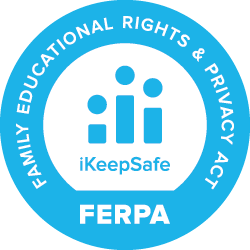DEV VERS - Mapping Scrap
Through science and engineering, we can keep valuable resources in circulation.
Resource Title:
Mapping Scrap
Description:
Through science and engineering we can keep valuable resources.
Target Grade Level:
Grades 5-8
Discipline or Course (Audience):
Science
Time Frame:
Two to three 45-minute sessions without extensions.
Suggested Grouping:
3-4 students
Educator Prep:
Preparation Directions:
- Gather materials.
- Make copies of or ensure online access to Supporting Material - Recovered Paper ScrapMap (at least 1 per every pair of students)
- Make copies of Supporting Material - Blank ScrapMap (1 per student).
- Save a cardboard box that comes with a purchase at the school
- Confirm students will have access to computers.
- Show students a cardboard box that has been used to ship something that they might recognize. Ask: “What should we do with it?”
- Have students discuss preliminary ideas about what happens to paper and other paper products, like the cardboard box you are holding. What other kinds of paper products can be recycled, and what happens to them? What are the steps involved? Can the paper or cardboard be turned into something new? Have students write down their ideas. Then, discuss as a class.
Investigate a ScrapMap: Teacher Directions
Introduce the concept of a ScrapMap, passing out Supporting Material - Recovered Paper ScrapMap . What do students notice? Have them compare their ideas to this map.
Discuss questions. Emphasize the Systems and Systems Model cross-cutting concept: “Defining the system under study—specifying the boundaries and making explicit a model of that system, providing a tool for understanding and testing ideas applicable throughout science and engineering”.
The poster ScrapMap and the ideas it displays illustrate the idea of systems. While many discussions of recycling stop at “Product A can be reused as Product B,” the ideas on the poster go further.
Raw materials need never be “thrown away.”
With systems thinking, we can keep the circle unbroken and the system intact. But to do this, we require science, engineering, and creativity. That theme should be emphasized as students complete this activity.
Create a ScrapMap: Teacher Directions
Assign each team a different material to investigate—glass, metals, electronics, aluminum, or rubber. Remind them to view the link for the commodity article for each team.
- Pass out Supporting Material - Blank ScrapMap (one per student). Explain that students may use these to draft out their initial ideas and take notes as they research
- Have students research their assigned material to create their own ScrapMap, finding at least three websites. Students should list their websites and take necessary notes to construct their map. This may take 1-2 full class periods.
- Have students discuss their findings in their teams and create one final ScrapMap to present to the class. Maps may be made on posterboard or digitally.
Present Your Findings: Teacher Directions
Have students present their ScrapMaps. Each presentation should be 2- 5 minutes and include a final version of the ScrapMap, either in print or digital form, and a thorough description of how the materials are part of a continuous series of steps in the recycling process. Students should also be able to explain at least 2-3 steps they can take to ensure that the chain of recycling is unbroken.
Have teams view the ReMA ScrapMap of the material they studied. Have them use the Interactive ScrapMaps and compare ReMA's ScrapMap to their own.
Once each team has presented, have students discuss the tips they agree can be implemented in the classroom and develop a plan to implement them.
Have teams view ReMA’s ScrapMap of the material they studied. Then, have them use the Interactive ScrapMaps and compare them to their own.
Extension: Teacher Directions
- Have students consider careers involved in the recycling industry by reading about some of the “Champions of Recycling” featured. Have students write about a champion they find particularly interesting and describe the type of work he/she does. Are there careers they could see themselves in someday?
- Journal Question: Have students make an argument for which of the steps discussed in “Getting to Zero” they think would have the most impact on the environment if taken. How would they launch a school-wide campaign to get everyone in the school to make these changes? How could they do this at home or in the community?
Remote Learning Adaptations:
This resource is appropriate for remote learning; no adaptations or modifications are necessary.
STUDENT CONTENT BELOW
Cardboard containers are important components of the global delivery system. Many items in your classroom come shipped or packaged in cardboard boxes or paper containers that you may never see or think about it. Where does cardboard come from? What happens to it after it is sent to be recycled? In this activity, you will analyze a ScrapMap to investigate the steps in recycling paper. A ScrapMap is a way to map out, or illustrate the continuous cycling of materials. After considering how paper products are recycled, you will conduct your own investigation to map out the steps involved in the continuous cycling of a second material, creating your own ScrapMap. Finally, you will develop three ideas for your community to contribute to the circle of recycling and keep the system intact.
Materials:
- Device with internet access
- Cardboard box or paper packaging
- Supporting Material - Recovered Paper ScrapMap
- Supporting Material - Blank ScrapMap
- Poster board or other means of display
- Markers (optional)
- Commodities Articles
Safety Notes:
- When using technology, engage in safe, legal, and ethical behavior; this applies to devices (hardware), applications or programs (software), and interactions with others.
- There are no anticipated physical safety risks associated with this Activity.
Investigate a ScrapMap
- In small groups, discuss what you think happens to paper once it’s recycled.
- What kinds of paper products can be recycled? Make a list.
- What do you think are the steps involved in the recycling process?
- Can these papers be turned into something new? Explain.
- Share ideas as a class and discuss.
- Study
Supporting Material - Recovered Paper ScrapMap
. This represents a system. The ScrapMap itself is a model of the system. Discuss the things you do at home and in the classroom to help keep the system intact.
- What would happen if nobody recycled their newspapers?
- How does this system help the environment?
Create a ScrapMap
- In teams, gather information about one of the commodity materials using the links in the Materials section.
- Find out what happens to these materials in the recycling process. What kinds of new items can be created?
- Find at least three websites to help you collect your information, and list them while you are taking notes. Be certain the sites you find are reliable sources of information. Ask your teacher for help if you are unsure!
- Create your own ScrapMap to illustrate how the material you have researched is part of a system representing a continuous series of steps in the recycling process. Use Supporting Material - Blank ScrapMap to capture your ideas.
Present Your Findings
- Create a 2-5 minute presentation for your team to communicate your findings. Your presentation should include a final ScrapMap of the material you researched, and describe how the recovered materials can be reused. This can be illustrated on a large posterboard or done as a computer presentation with a program such as Google Slides. Your presentation should also include 2-3 tips to share with your classmates so that the cycle won’t be broken.
- As a class, discuss the steps you can take in your own classroom to reduce waste in “getting to zero” and develop a plan to put them into action!
- Use Game - Scrap Map Interactive to compare the ScrapMap of the material you researched with the one your team created. What new information, if any, is presented?
Reflect and Apply:
- Why is it important to keep recycling systems continuously going?
- Paper is easy to recycle, saving forests and energy and reducing greenhouse gases. More than a billion tons of paper have been recycled in the past two decades. How do you think recycling the materials you and/or your classmates researched helps the environment?
Extension:
- There are many innovative scientists and engineers involved in the recycling business. Consider what kinds of jobs these champions might do, and what problems they may need to solve by reading about these “Champions of Recycling”.
- Choose a “Champion” you found particularly interesting and describe the work that he/she does, and why this intrigues you. Can you see yourself doing this someday?
- Journal Question: Which of the steps discussed in “Getting to Zero” would impact the environment most if taken? How would you launch a school-wide campaign to get everyone in the school to make these changes? How could you do this at home or in your community?
.jpg)
